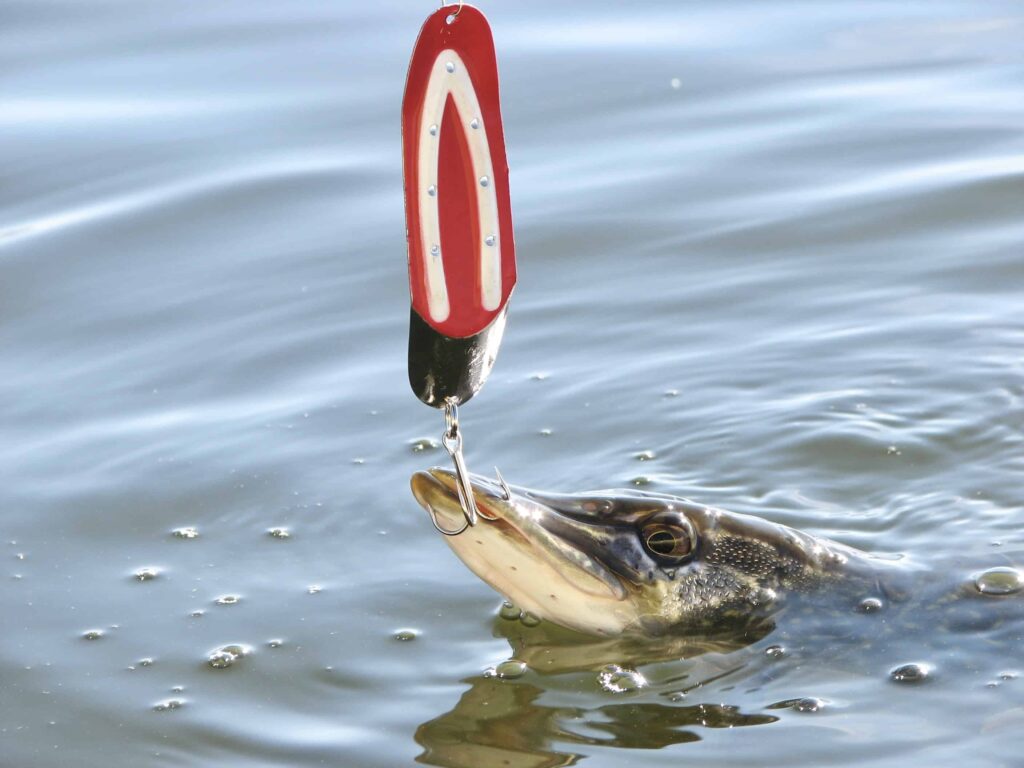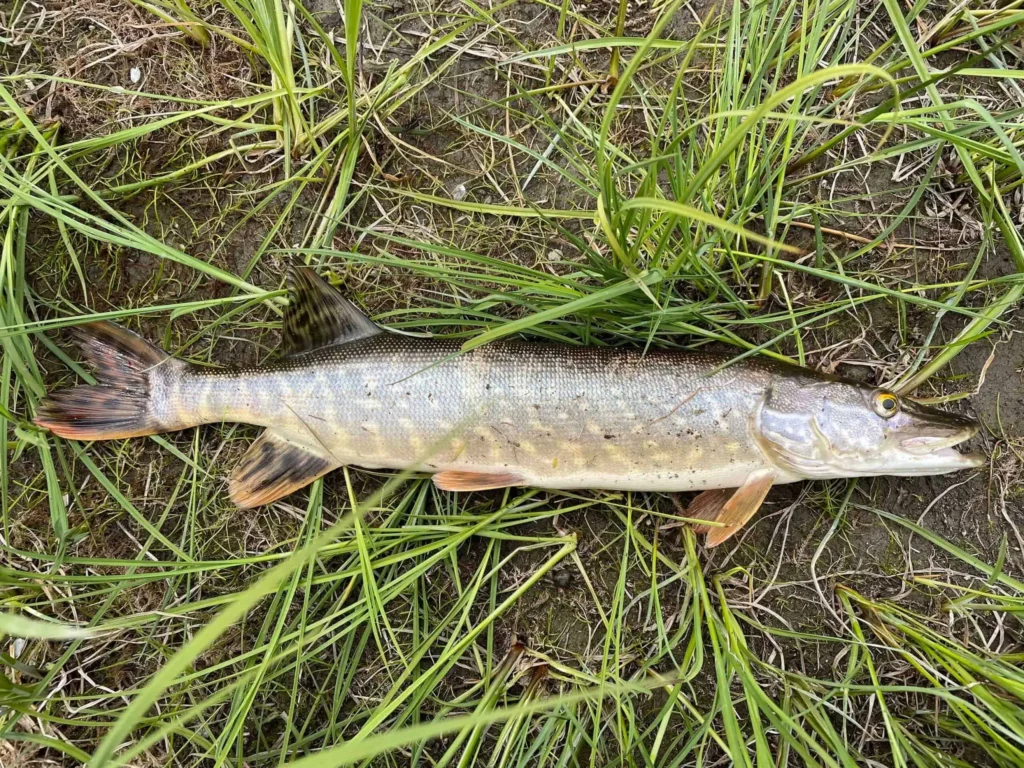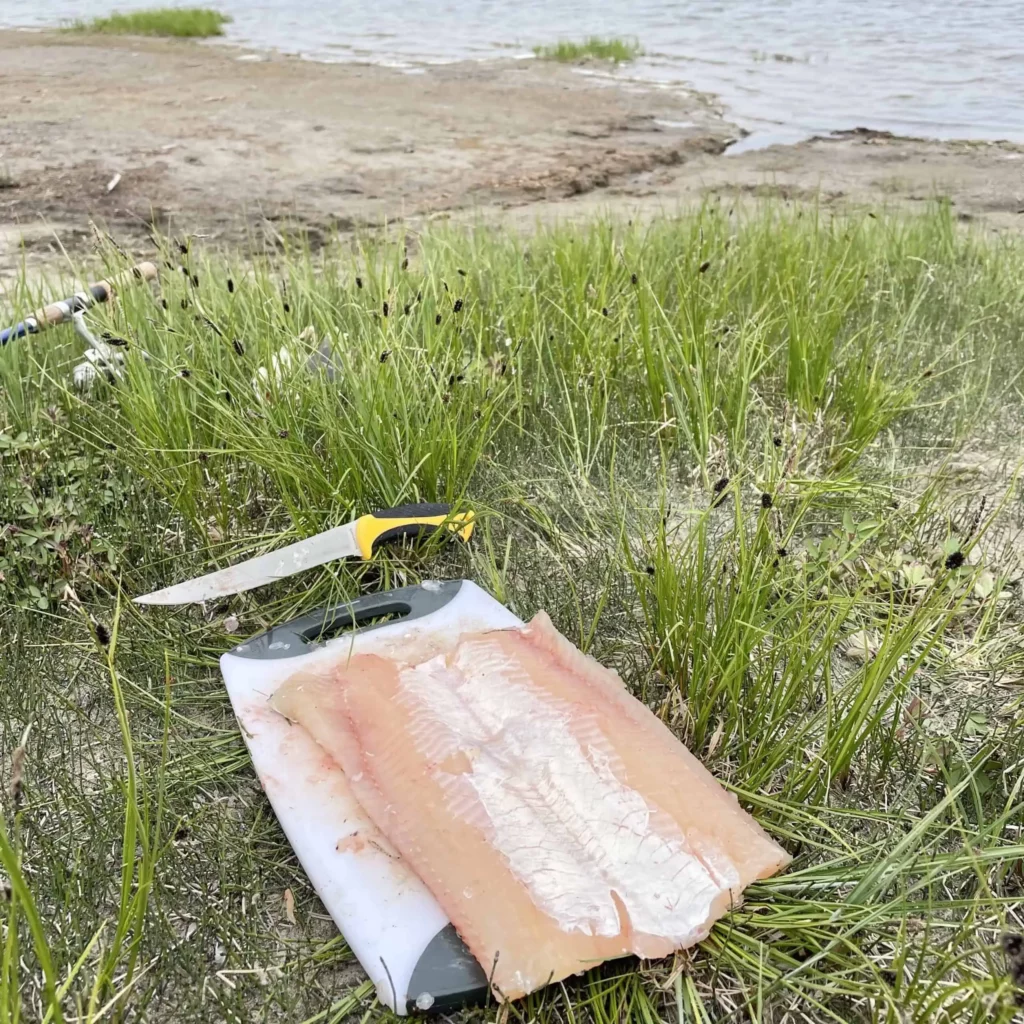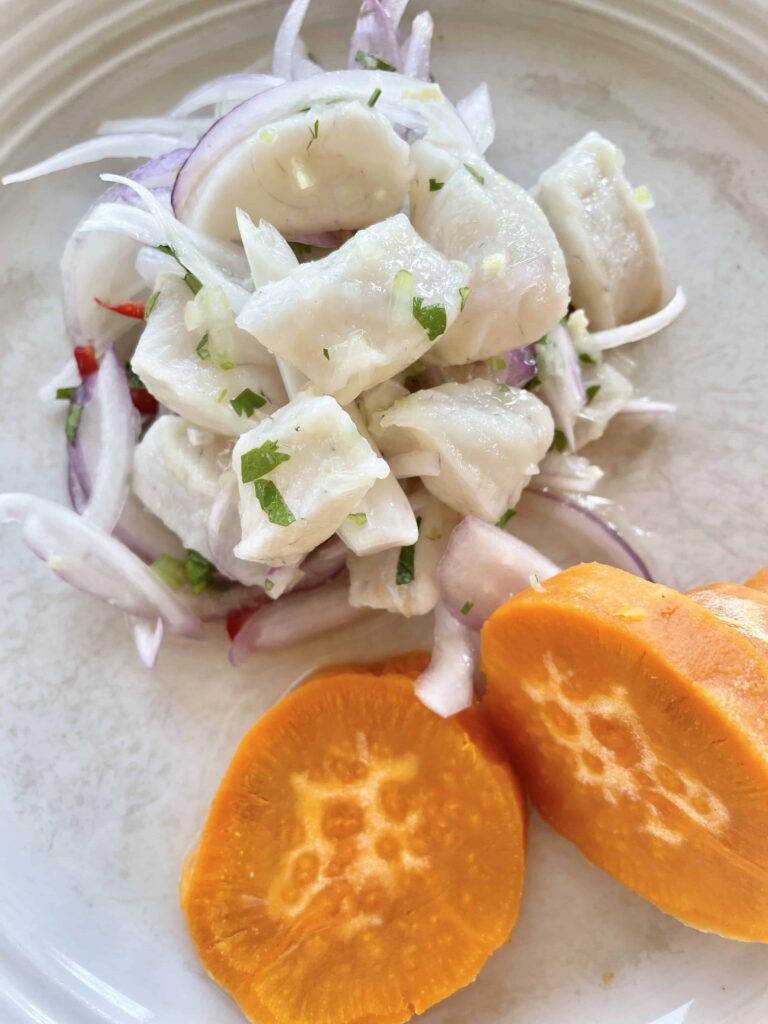



I fell in love with northern pike this summer. If you’ve ever seen a pike up close, you’re probably wondering how one could love such a slimy creature with its mouth filled with hundreds of pointy teeth and a predatory look in its eyes that may make you wonder if there’s ever been a recorded pike attack on an unassuming swimmer (I checked and the few confirmed cases include a water skier who was bitten on the foot in Wales, in the late ’90s, and a husky who was reportedly attacked by a pike near North Pole, Alaska, last year).
According to the Government of Yukon website, northern pike are the most widely distributed freshwater fish in Canada. Found in shallow waters and weedy marshes throughout lakes and rivers in North America, Northern Europe and Asia, it’s a carnivorous fish whose diet includes insects, smaller fish, frogs, small mammals and even birds. When food is scarce, pikes are said to resort to cannibalism. Nicknames include Northacuda, water wolf, slough shark, snake fish and snot rocket. Like I said—not the kind of fish that one would think one could love.
Despite its dubious reputation, I would argue that pike is an underrated and formidable fish. Northern pike are apex predators that generally live solitary lives and are aggressively territorial. They can swim 12 to 16 kilometres per hour and put up a fierce and thrilling fight. If you’re lucky, you can see them dart out from a clump of grass and speed towards your lure like a scene from the movie Jaws—their elongated bodies sometimes jumping out of the water with a powerful burst of energy in an attempt to free themselves. They’re generally very abundant and are often caught by anglers who are hoping to catch other kinds of fish, making them common victims of inept catch-and-release techniques.
While their almost prehistoric appearance makes them less than appetizing to look at, they actually have firm and flaky white meat with a surprisingly mild taste, especially if you catch them in cold waters. They’re rich in protein, selenium, vitamins B3 and B12, omega 3s and vitamin D, the last of which makes them a great addition to your diet in the dark winter months when your body can’t make sufficient vitamin D.
Pike may have gained a negative reputation because they are notoriously bony. Having heard about their unique Y-shaped pin bones, I imagine that there are plenty of people who have never even tried their meat due to being intimidated by the prospect of filleting them. Look up the “five fillet method” on YouTube and you’ll quickly see how easy it is to get five large, boneless fillets from your next pike, which you can then turn into a variety of delicious meals.
Whether you enjoy pike steamed, grilled, boiled in salt water to make “poor man’s lobster,” battered and fried, turned into chowder, cut up into pieces and tossed with pasta, ground into fish burgers or pickled, I bet you’ll be amazed at how good this fearsome-looking fish tastes. This summer I had the pleasure of eating pike ceviche for the first time. The northern pike’s firm, white meat makes it perfect for this traditional Peruvian dish that is typically made with raw fish or seafood marinated in citrus juice. The experience made me realize that there are probably still an endless array of other surprising uses for pike, unknown to me up until now.
Since pike is a predatory fish, it can contain a bit more mercury than a non-predatory fish. Catching smaller, younger pike can help you avoid higher levels of contamination and also allows the larger fish to reproduce again next spring. The largest recorded pike was caught in Germany in 1986 and weighed 25 kilograms; I’m generally happiest with pike that weigh two or three kilos.
The previously mentioned nickname “snot rocket” comes from the extra-slimy mucous coating that has been known to make even the most seasoned angler cringe. The slime isn’t a trivial feature, however; it’s actually nature’s ingenious way of helping pike move through the water faster by reducing friction, helping them escape predators and protecting them from fungi, bacteria, parasites and infections. Since the mucous is a result of water mixing with glycol proteins produced by the pike’s epidermis, it stands to reason that the sliminess will decrease if you let your freshly-caught pike dry off a bit before handling it.
Once you have a pike on your line, be careful when unhooking your hook from the pike’s jaw (preferably with a jaw spreader), and if you don’t want to lose your lure while fishing pike, be sure to use a stainless-steel wire leader. Compared to other fish, pike have an incredible way of hanging onto life that begs to be respected. Be sure to kill your catch properly in order to prevent it from suffering for long.
For me, pike fishing is a wonderfully satisfying and exciting way to fill the freezer with some local protein. It’s a fish that I admire for its fierceness and its ability to offer generous amounts of delicious meat for myself and the ones I love. I appreciate the fact that they’re plentiful and fairly easy to catch, and I’m grateful.
Northern Pike Ceviche
Ingredients
- Skinless, boneless pike fillet, cut into small cubes
- Fresh lime juice
- Salt
- Ginger, grated
- Celery, minced
- Garlic, minced
- Finely chopped chili pepper (choose amount and type to match your taste preference)
- Fresh cilantro, chopped
- Red onion, thinly sliced (if you want to lessen the intense onion taste, soak the sliced onion in cold water for at least 15 minutes)
Instructions
1. Wash and dry pike.
2. Place cubed fish in a bowl and add enough fresh lime juice to cover it.
3. Add the salt, ginger, garlic, chili pepper, cilantro and celery.
4. Let it sit in the fridge for 20 to 30 minutes, turning the pieces a few times so they all get equally “cooked” by the lime juice (you’ll notice the meat turning opaque in as little as 5 minutes).
5. Add the red onion.
6. Mix and let the ceviche marinate for another 10 minutes, if desired.*
(The time you let the fish marinate depends on the size of the cubes and the texture you want to achieve: some let it marinate for less time; and others, for more).
Serve with boiled sweet potatoes and enjoy!
* Acidic marinades will not kill bacteria or parasitic worms. Ceviche is traditionally made with fresh fish, but if you want to minimize the risk of parasites, Health Canada recommends that fish be frozen at or below -20 C for at least seven days, to kill potentially harmful parasites. For information about parasites and diseases in Yukon fish, check out the Yukon Fish Health Handbook: yukon.ca/sites/yukon.ca/files/env/env-yukon-fish-health-handbook.pdf
Please Note: Ceviche is typically not recommended for pregnant women.




